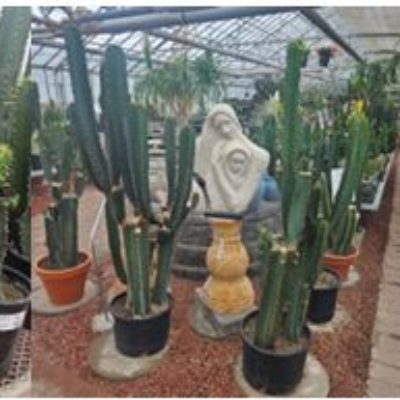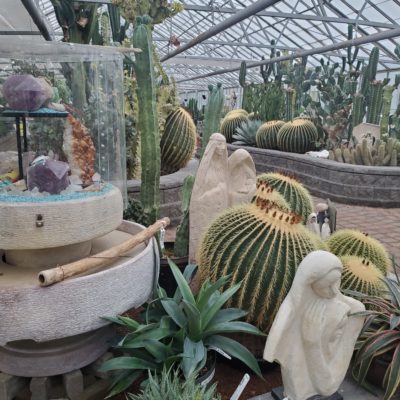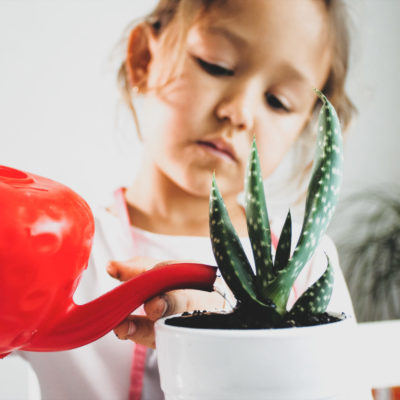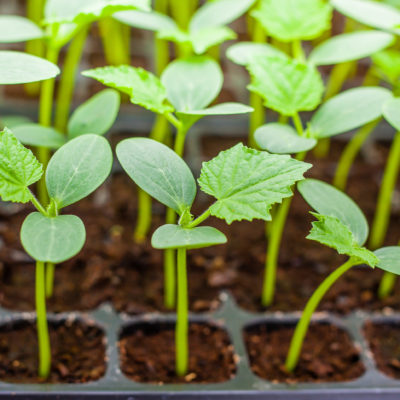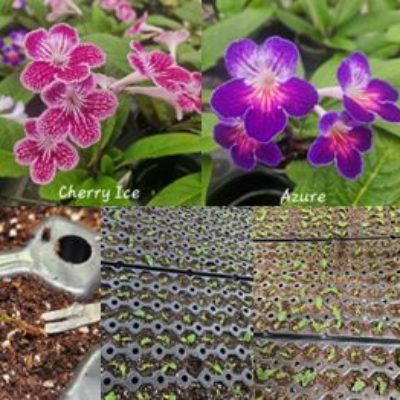
Plant Profile: Euphorbia ingens ‘Chocolate Drop’
As you wander through Belgian Nursery’s Cactus & Succulent House, you’ll notice our large display gardens filled with many specimen varieties, some of which are considered quite rare in Canada. One of those “rarer” cacti is the ‘Chocolate Drop’ (Euphorbia ingens), a majestic sight to behold and makes an incredible statement to the greenhouse – and you can bring a piece of it home, too!
The ‘Chocolate Drop’ is a stunning upright cactus; its deep green stems are deeply ribbed and add an architectural flair to any sunny spot. Those ribs are lined with thick spines from soil to crown, and its these spines that give it the name ‘Chocolate Drop’ as they emerge chocolate-brown before aging to a dark chocolate. They are also very sharp and very thick, so they tend to stay on the plant after they’ve stabbed one’s fingers. At least there’s no fiddling with tweezers!
Caring for these gentle desert giants is no different from any other cactus variety, so if you can handle a ‘Golden Barrel’ or a ‘Bunny Ears’ Opuntia, you can easily handle a ‘Chocolate Drop’! Place them in direct sunlight, preferably in a south or west facing window where they’ll get at least 4 hours of light per day. Let your pots dry out very well – you want the soil to be very light, so don’t be afraid to wait until you see it cracking away from the edge of the pot! When you do water, you’ll probably have to water them several times (allowing them to drain between waterings) as the soil will need a few tries to absorb all that moisture.
And you could even put them outdoors for the summer! ‘Chocolate Drop’ are a perfect addition to your outdoor spaces, so long as temperatures are over 15°C and those sharp spines are kept out of any high traffic areas. They’ll need to slowly adjust to the outdoor elements to reduce the risk of sunburn and overall stress. They can handle morning sun on the first day but will need to come back inside before it gets too intense around 11am. Gradually increase the amount of direct sun exposure and by the end of the week, they’ll be happy and thriving outside! Your cactus will dry out faster as it soaks up all that direct sunlight, so check your pots daily and water deeply as needed. Just be aware if it’s a rainy summer that they do not get too much water – you may have to move them to a protected spot out of the rain or move them back inside.
These slow growing cactus can get quite tall (this usually takes many years, even in a bright sunny window) and may need to be cut back to lower its centre of gravity and help it branch out. A sharp knife is all you need to make a clean cut across the stem; aim a bit lower than your preferred height as new branches or “arms” can form below the cut. The stem will bleed a white latex-like liquid, so wear gloves if you have a latex allergy/sensitivity. Bonus: That top cutting can be planted and grown as a new cactus! Just lay the cutting(s) down on some newspaper and allow them to dry in a bright but indirect sunny spot for a few weeks (or months, if it’s fall or winter). Once there’s a thick, hard scab on the bottom, you can plant them in an appropriate size of pot filled with cactus soil and water them into their new homes. Just be careful of those spines when handling both main plant and cuttings!
Fun Fact: the display gardens in the Cactus & Succulent House grow faster than they would in the average home, since the walls and roof are untreated glass and let in all the sunlight, even on cloudy days! As such, we cut our display gardens back once a year; the prior cuts are easy to find on cacti – just look for all the branches!
Light: Bright, Direct Light – minimum 4 hours of direct sunlight per day but the more the better!
Water: Let dry thoroughly then water well. You may have to water several times (draining after each) to ensure the moisture is absorbed into the soil.
Fertilizer: Use an all-purpose fertilizer at half strength twice a year, once in spring and once in summer. You can also use a Cactus fertilizer at full strength at the same intervals.
Care Tips: Most cacti prefer to stay rootbound. When repotting is required, go up one pot size (i.e. from a 4” pot to a 5” pot) and use cactus soil for extra drainage. Handle plants carefully when moving and/or repotting; kitchen/barbeque tongs work very well, as does using the back of a spoon to press down on the soil.

